This post contains affiliate links. We earn commissions if you purchase products from retailers after clicking on a link from our site. As an Amazon Associate, we earn from qualifying purchases.
Whether you’re replacing parts on a bongo drum or you would just like to know its anatomy, it can be helpful to know the different sections and parts of a bongo drum. I made this diagram to be a helpful visualization for the discussion.
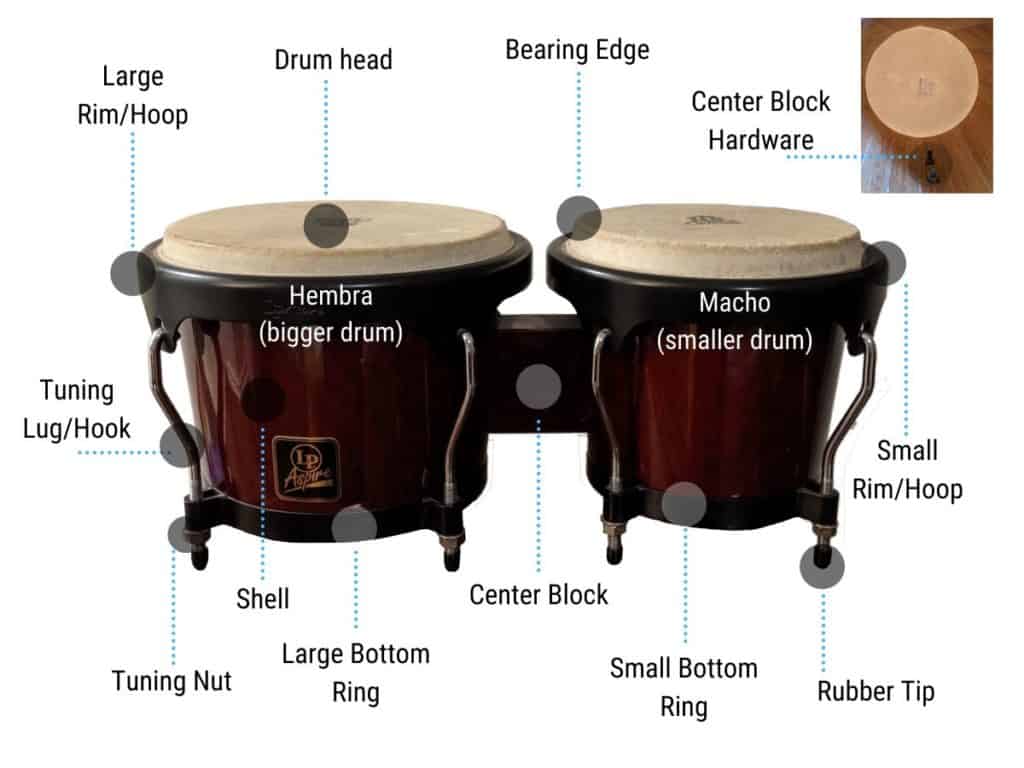
By the way, looking for recording equipment and musical instruments? Check out Sweetwater.com for microphones, monitors, audio interface or any other recording gear that you could ever need. (Affiliate Link)
Modern Bongo Drums are made up of the following components: a drum head is stretched over a bearing edge, which is held in place by a hoop called the rim. The rim is attached to a ring on the bottom of the bongos by hooks that are tightened by nuts. The frame of the bongos is called the shell, and the two bongos are joined by a center block.
Bongo drums are a bit more complex than they may look on the outset. Let’s dive into each of the components and talk about what they are and what they are for.
The Different Parts of Bongo Drums
Each component plays a part in creating the sound of a bongo drum, so let’s get started.
As an alternative, I made this video going over the basics as well as the anatomy that you can check out here if you’d prefer to watch.
The Macho and the Hembra
The bongo drums come in pairs, the Macho, which is the smaller drum, and the hembra, which is the larger drum.
When playing the bongos, it’s traditional to play with the macho on your left and the hembra on your right.
I went to Musician’s Friend and opened up 16 different bongo drums and found the the most common drum sizes for the bongos.
The most common size of the macho is 6.75 inches diameter, ranging from 6 inches to 7.25 inches. The most common size for the hembra is 8 inches diameter, ranging from 7 inches to 8.625 inches.
The Drum Head
The drum head is the most important part of the bongo drums. The drum head is the fundamental component that makes the bongo drums a drum at all.
The drum head is a thin piece of flat material that is stretched tightly over a bearing edge. The tightness of the material is what causes the sound of the drum. Once you strike the taut material, it vibrates, causing the air to vibrate, causing sound. For a more in-depth look at how bongos make sound, check out our article here.
Bongo drum heads are traditionally made from animal skin, such as from a calf or a mule, but just like any drum, the drum head can be synthetic. Because animal skin is so prevalent in bongo drum heads, synthetic bongo drum heads are often manufactured to look like they are animal skins.
The Bearing Edge
The bearing edge is the circle that the drumheads are tightened against. They bear the tautness of the skin hence the name.
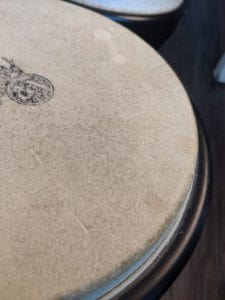
The bearing edge is kind of an unsung hero in the design of the bongo drum, because it plays a critical role in being a surface that is smooth and strong enough to handle pulling the skin across it extremely tightly without breaking or damaging the drum head.
The bearing edge is what connects the drum head with the rest of the drum. You can really get a feel for this if you strike the bearing edge and immediately release with your finger. Go ahead, try it!
Hear that ringing?
That ringing is coming from the resonation of the drum. The drum itself is actually vibrating along with the drum head, which gives a distinct ringing sound.
The Rim
The rim actually has a couple components to it: The outer rim itself (which is what you can see), and the hoop. The edges of the drum head are actually sandwiched between the hoop and the rim.
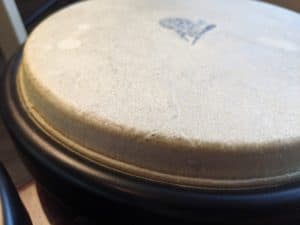
The rim is connected to the bottom of the bongo drums via a hook. The rim is what is pulling the drum head across the bearing edge. The rims apply the tension from the the tuning lugs therefore giving the drum heads their sound.
The rims themselves don’t necessarily contribute all that much to the sound of the bongo drum, but they can be played. Some bongoseros may strike the rim with a stick with one hand as they play the bongos with their other hand for certain rhythms.
Sometimes the rim is made from steel or aluminum, and it can factor into how much the bongos cost. Obviously chrome and gold plating or anything fancy will make the bongos cost more.
If you want an outline of what to expect for inexpensive bongos all the way up to professional-level bongos, check out our article here.
The Shell
The frame of the bongos is called the shell.
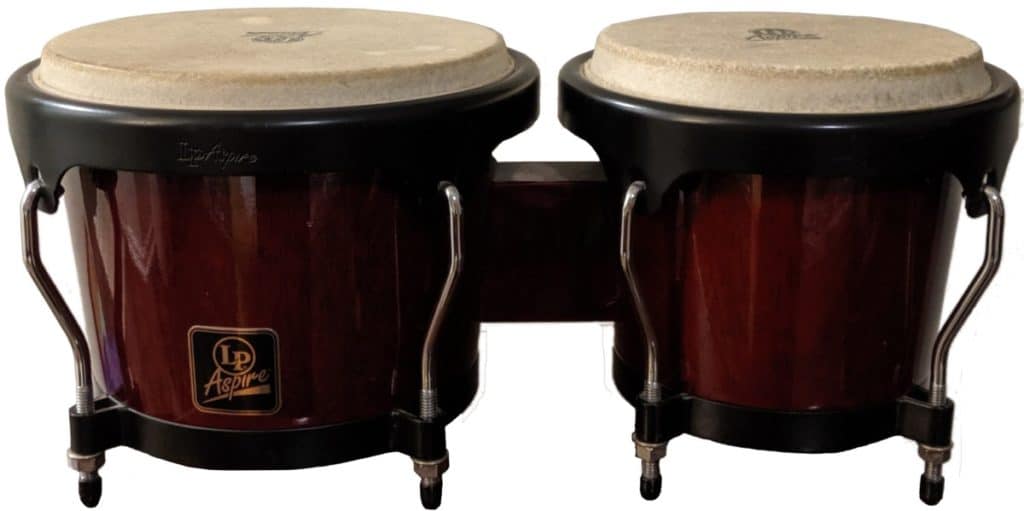
The shell is actually not a hollowed log, but is instead a series of vertical pieces of wood glued tightly together as you can see clearly in this picture:
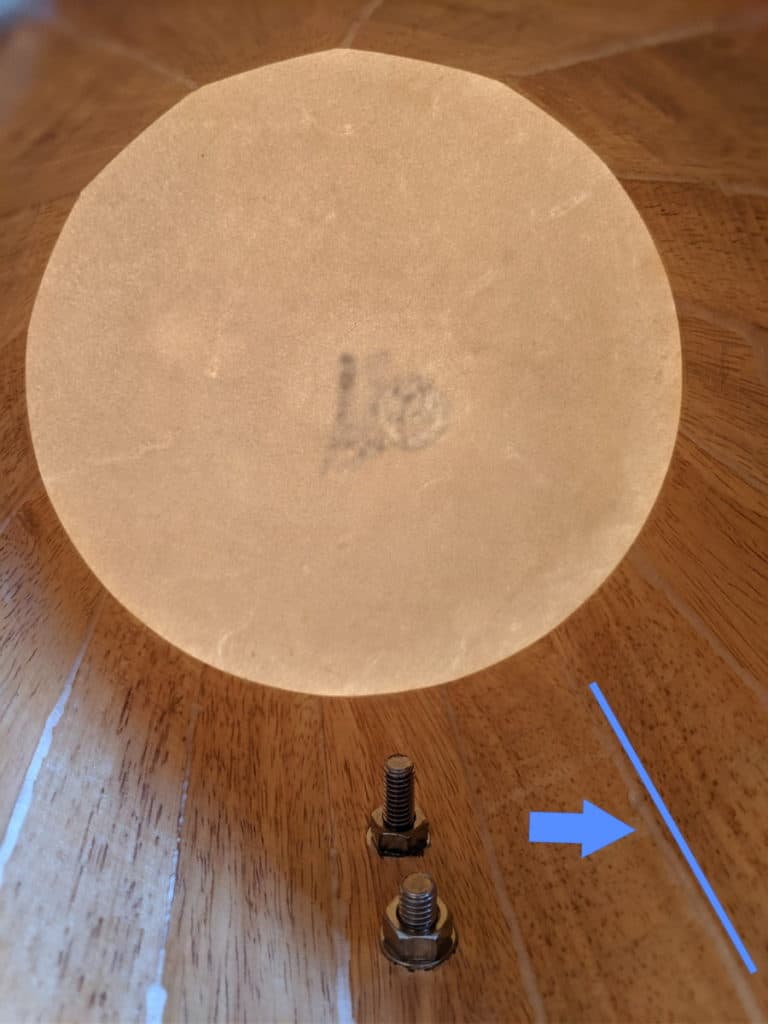
The shell is often painted or varnished to give a sleek appearance.
The shell has an important part in forming the sound–the more unified the wood pieces are, the better the resonation of the drum. If the wood pieces are not joined tightly, then the drum will not ring clearly. How well the wood is joined is an indicator of the quality of bongo drums.
Bongo drum shells can actually be made from many different types of materials. The most traditional material is a wood of some kind. The most common bongo drum wood these days is called Siam oak, which is just a rubber tree.
Besides rubber tree, (higher-end) bongos are also made from hardwoods like oak, red oak, mahogany, etc.
In addition, bongo drum shells can also be made from fiberglass or ABS (plastic).
It’s arguable how much of the bongo drum sound is impacted by the type of material, but in any case, the shell build and material type all combine together to form the unique sound of that particular bongo drum.
The Tuning Lug/Hook
The tuning lug is the connector between the bottom of the bongo drum shell and the rim. The tuning lug is also used to tension the drum head via a mechanism that pulls the rim of the drum towards the bottom of the drum.
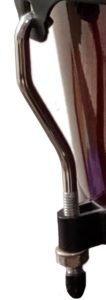
To tension the bongo drum heads and therefore to tune them, you simply use a wrench to tighten the nuts at the bottom of the tuning lugs. These nuts effectively shorten the amount of distance from the bottom ring to the rim of the drum, causing the drum head to tighten.
The Center Block
“Wow”… you might be thinking… “this guy is talking to me about the center block of a bongo, and thinks I might still be interested!”
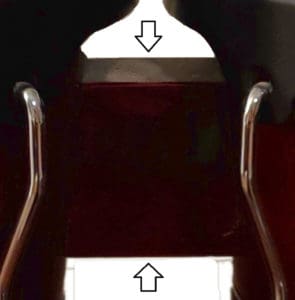
I get your point. It seems like it’s a very boring part of the bongo drum, and for the most part it is just a simple piece of wood that gets the job done. The center block’s primary function is to join together the two bongo drums.
The center block is often bolted to the bongo drum on the inside of the drum shell as you can see in this picture.
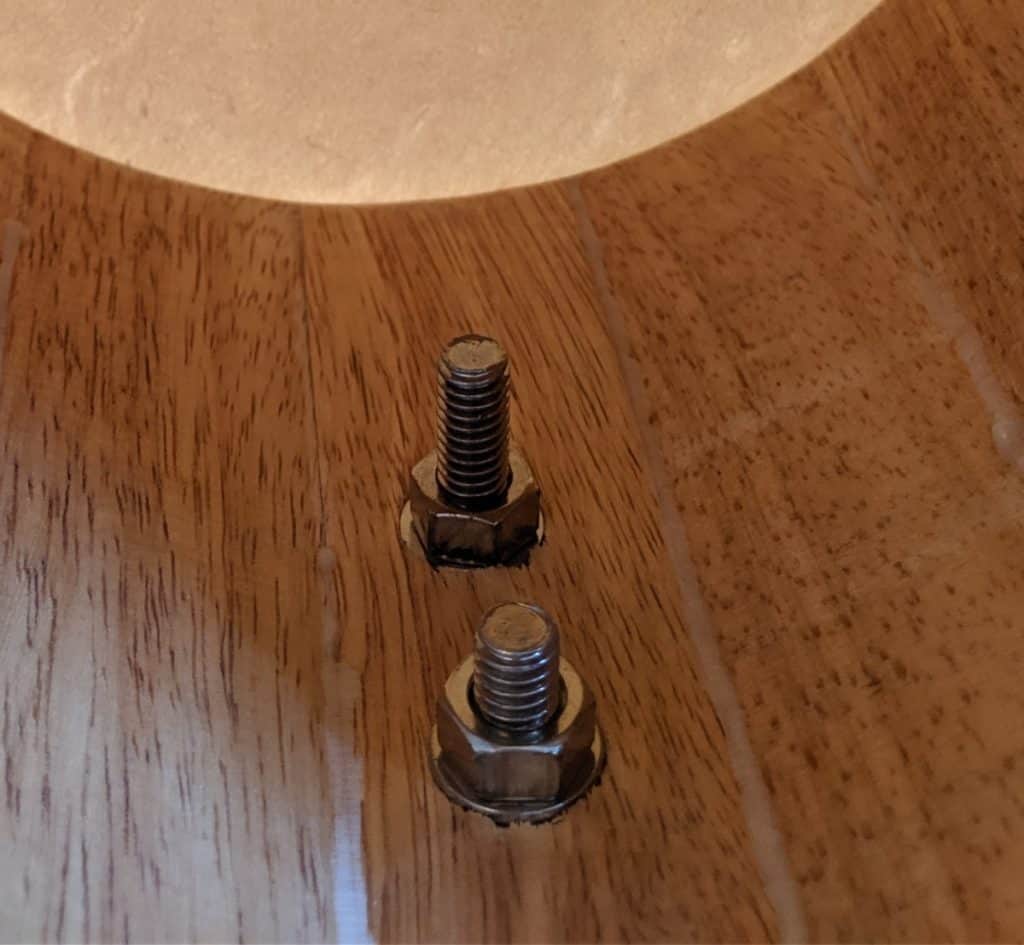
However, Meinl is one bongo drum manufacturer that believes that the tone of the bongo drum is affected by interrupting the joined wood of the shell by the drilled nuts and bolts.
Meinl has a patented Free Ride suspension system that connects the two bongo drums without this hardware and the corresponding center block. There is still a block that is connecting to the two pieces, but it is not as you see here.
Who knew there was so much to know about bongo drum center blocks?
The Bottom Ring
This is a very nondescript part of the bongo drum, as it’s sole purpose is to be a bracing point for the tuning lugs to pull the rim towards the bottom of the bongo drum.

The bottom ring of the bongo drum is simply a ring made to go over the bottom part of the bongo drum shell. The ring has as many loops as there are tuning lugs for a particular bongo drum. A nut is tightened against the bottom ring which allows you to put tension on the rim with the tuning lug.
Other Bongo Questions
So that’s the anatomy of the bongo drums complete with pictures and descriptions. There are a couple other questions out there about different aspects of the bongo drums that I’ll address here:
What Are Big Bongos Called?
What are sometimes mistakenly called big bongo drums are actually what are called conga drums. Conga drums are in fact a separate type of drum, providing a much deeper drum sound with much more bass. Bongo drums and conga drums are featured together in Latin music, and in fact, drum manufacturers often will make bongo and conga drums in a set with the same color and wood finish to match.
How Do You Say Bongo?
The commonly accepted pronunciation of bongo is to pronounce the first “o” with an “ah” sound, like this: “bahn go”.
However, bongo drums originated in Cuba, a Spanish speaking country, so the technical pronunciation would be to pronounce the “o’s” in bongo the same, so would sound more like “bone go”, with the emphasis on “bone“.
What is a Bongo Player Called?
The traditional title of the bongo player is the bongosero, pronounced “bone go sero” if pronouncing it in Spanish, or just “bahngo saraho (silent h)” if pronouncing it in English.
Alternatively, you can just say bongo player and that’s also acceptable and understood.
Are Bongo Drums African?
Because of African ancestry in Cuba, it’s undoubted that the bongo drums were influenced by African drum concepts. However, the bongo drums first appeared definitively in Cuba, and thus are featured in many Afro-Cuban music styles.
Which Styles of Music Are the Bongo Drums Played?
Bongo drums are heard in a variety of music styles, but are featured prominently in many different Latin music styles and its derivatives, such as salsa, bachata, the Latin ballad, and many more.
Besides Latin music, many jazz songs feature bongos, and you will hear it in some rock songs as well as in many indie genres.
